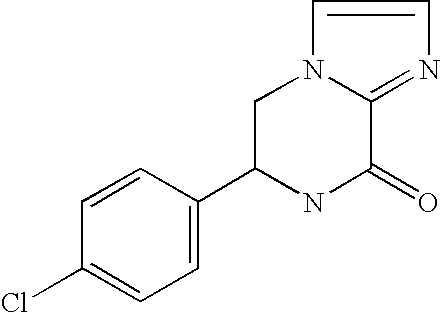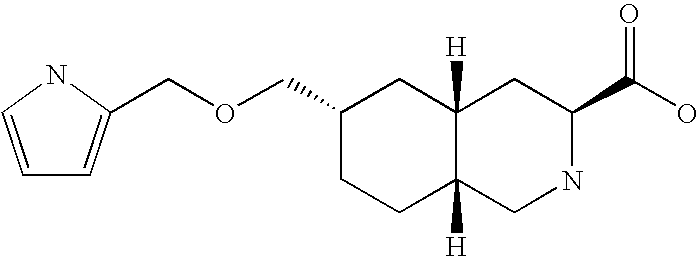Remedy for glioblastoma
a glioblastoma and treatment technology, applied in the field of glioblastoma treatment, can solve the problems of poor prognosis, high death rate of glioblastoma, and limited use of pharmaceutical agents with glioblastoma indications
- Summary
- Abstract
- Description
- Claims
- Application Information
AI Technical Summary
Benefits of technology
Problems solved by technology
Method used
Image
Examples
experimental example 1
Growith Inhibition of Glioblastoma In Vitro
[0073] Human glioblastoma cell (CGNH-89 cell line) was used at this experiment. These cells were randomly divided in the following three groups: a group of a glutamate-free medium (no glutamate group; control group); a group of the glutamate-free medium added 100 μM glutamate (100 μM glutamate group); a group of the glutamate-free medium added 100 μM glutamate and 20 μM NBQX (100 μM glutamate+20 μM NBQX group). The cells were incubated for 48 hours. The CGNH-89 cell was cultured in DMEM (Dulbecco's modified Eagle's medium) supplemented with 10% dialyzed fetal calf serum.
CGNH-89 Cell Line
[0074] CGNH-89 cell line was established through resection from the tumor at the right front lobe of a 56-year old lady according to the Explant method by Nicolas et al. (Science 196, 60-63, 1977). The cell line shows activities of glia cell fibrous acidic protein (GFAP), vimentin, A2B5, 04 and myelin basic protein (J. Neuropathol. Exp. Neurol., 57653-6...
experimental example 2
Growth Inhibition on the Glioblastoma (Human Glioblastoma) In Vivo
[0082] Nude mice (5-6 weeks old) were used at this experiment. 107 cells of CGNH-89 used in Example 1 were transplanted subcutaneously in the nude mice. On the next day of transplantation, the mice were divided randomly in two groups; a group (n=12) to be administered with 100 mg / kg compound A and a group (n=12) to be administered with PBS (phosphate buffered saline). The drug was administered repeatedly intraperitoneally for 14 days starting on the next day of transplantation. Up to day 8 after the completion of the administration, the mice were observed. The tumor size was measured every two days with a vernier micrometer, to calculate the volume according to the formula (length×width2)×½.
[0083] The results are shown in mean±standard deviation and statistically analyzed by the Student's t-test. The significance level was set at p<0.05.
Test Results
[0084] Compound A as an antagonist against AMPA receptor express...
experimental example 3
Growth Inhibition on Glioblastoma (Human Glioblastoma) in the Orthotopic Xenograft Model
[0086] Using an orthotopic xenograft model, in which CGNH-89 is transplanted in the brain parenchyma of mouse or rat, the anti-tumor effect of an antagonist against AMPA receptor is evaluated. The dose of compound A is 50 mg / kg or 10 mg / kg. On the next day of the transplantation of the tumor, intraperitoneal administration of compound A started for 14 days. On day 21, a specimen is prepared for pathological analysis.
PUM
| Property | Measurement | Unit |
|---|---|---|
| Molar density | aaaaa | aaaaa |
| Molar density | aaaaa | aaaaa |
| Molar density | aaaaa | aaaaa |
Abstract
Description
Claims
Application Information
 Login to View More
Login to View More - R&D
- Intellectual Property
- Life Sciences
- Materials
- Tech Scout
- Unparalleled Data Quality
- Higher Quality Content
- 60% Fewer Hallucinations
Browse by: Latest US Patents, China's latest patents, Technical Efficacy Thesaurus, Application Domain, Technology Topic, Popular Technical Reports.
© 2025 PatSnap. All rights reserved.Legal|Privacy policy|Modern Slavery Act Transparency Statement|Sitemap|About US| Contact US: help@patsnap.com



